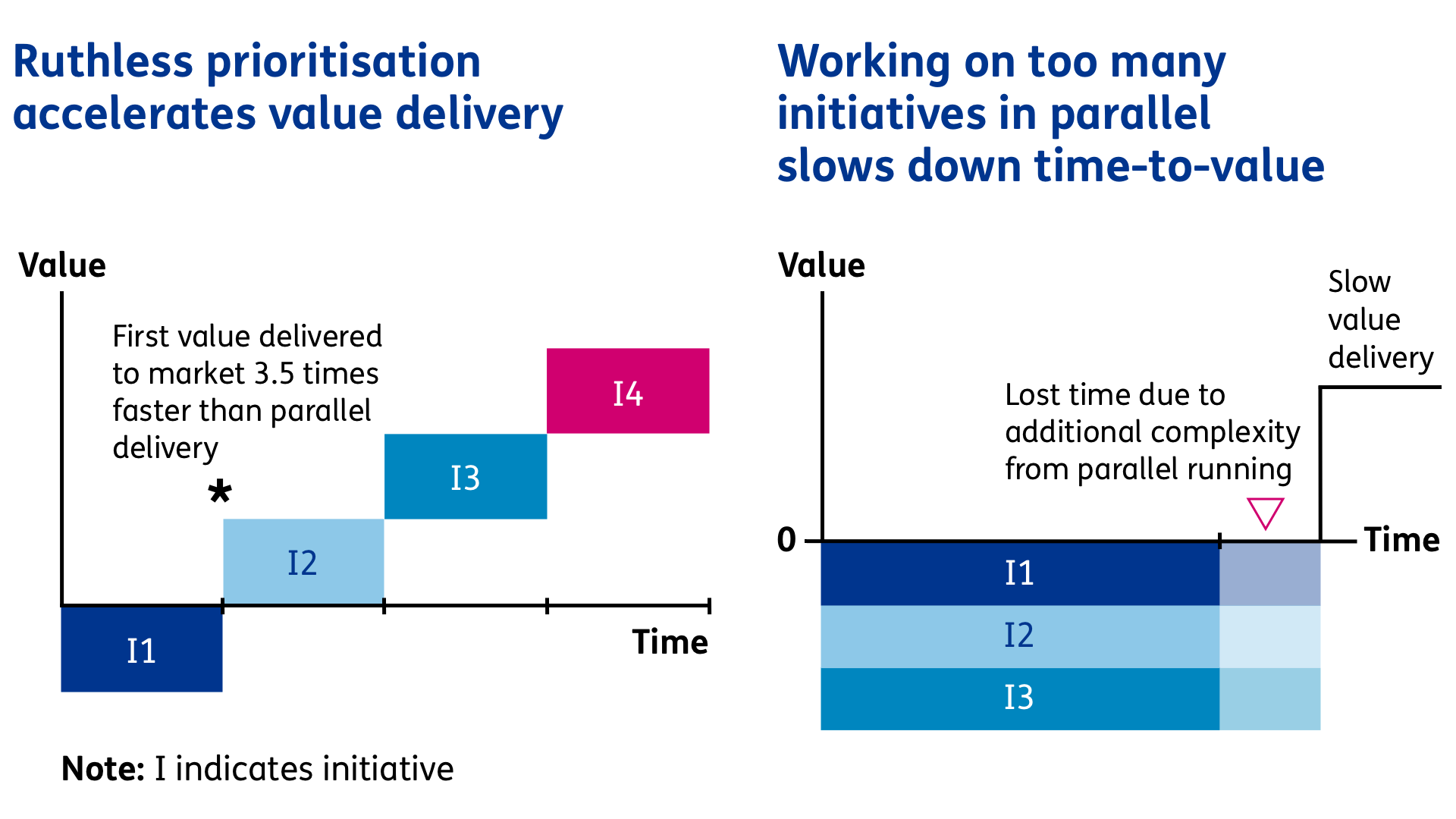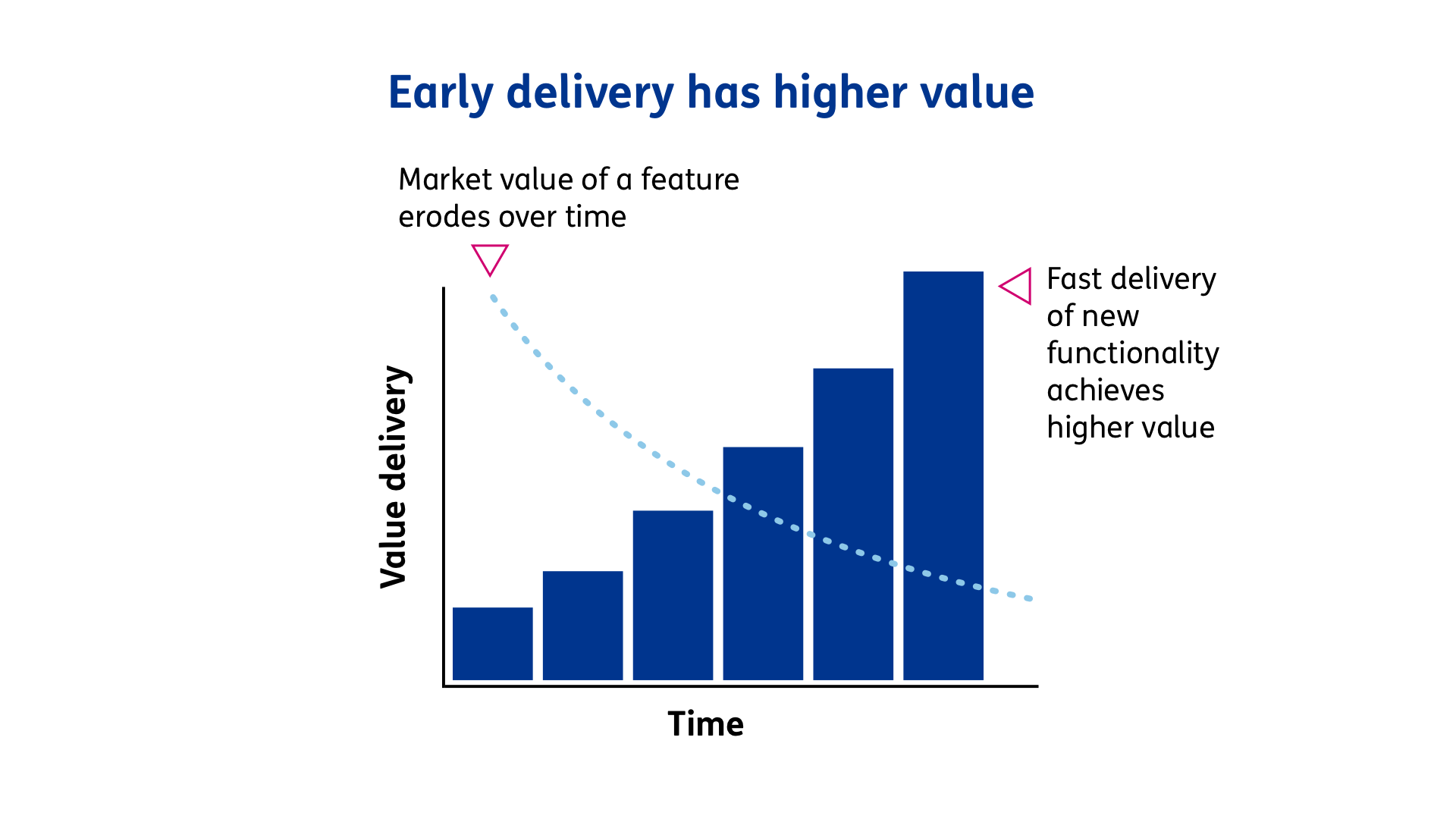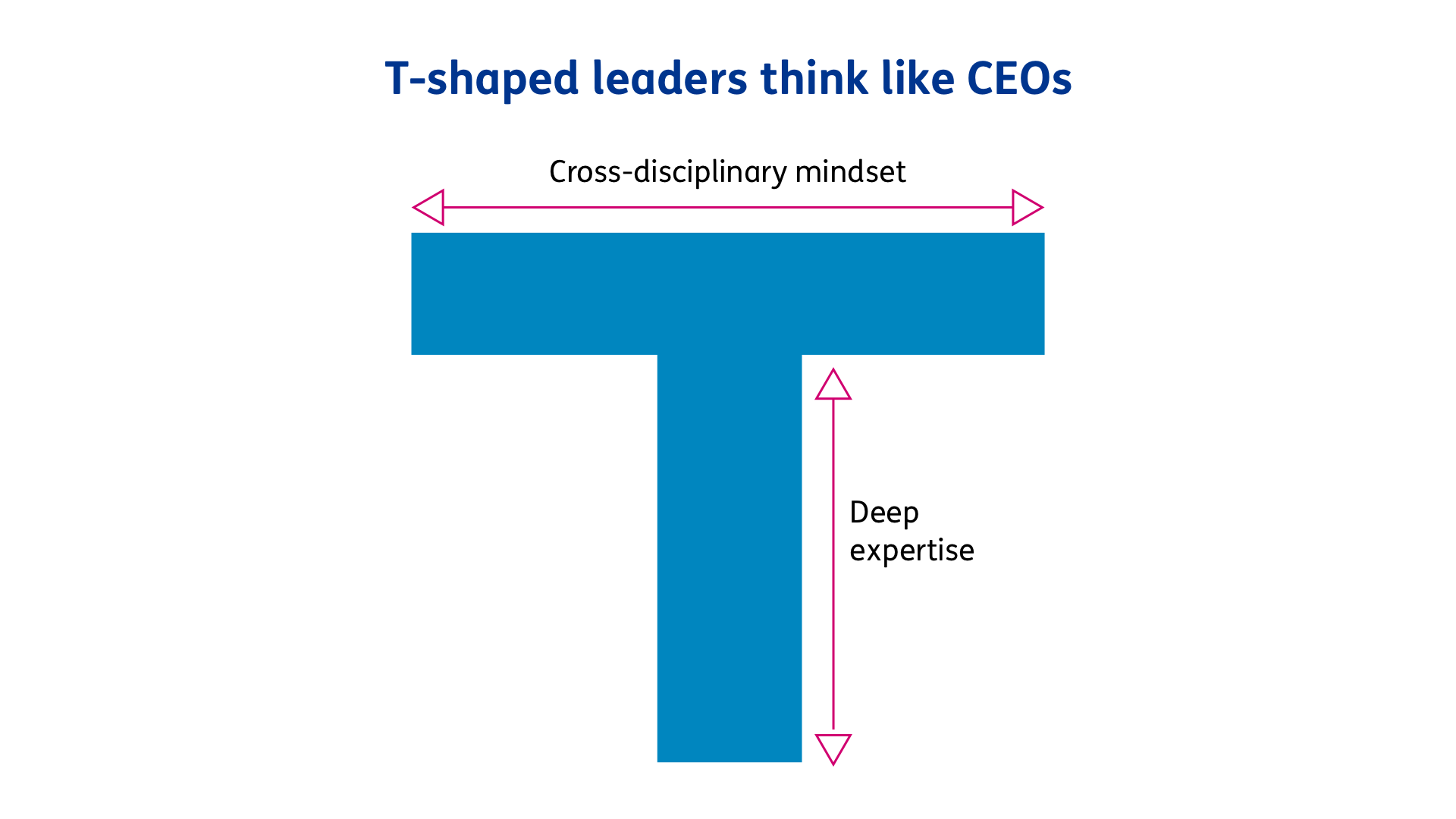
Ruthless prioritisation
2 November 2021
The secret to delivering a corporate strategy faster, more effectively and at lower cost
What are your company’s strategic objectives? What could you stop to deliver faster?
Many executives find it hard to answer these two questions. It’s a challenge that’s costing them dearly. Lack of clarity about strategic objectives and poor prioritisation slow companies down, leaving them falling behind the competition. In an age where all organisations are trying to innovate at pace and rapidly gain market share, that's a cost they simply can't afford.
How can executive teams deliver on their strategic objectives faster, more effectively and at lower cost? By ruthlessly prioritising what they focus on.
Too often, executives aren’t clear on their company’s strategic direction and objectives. So they end up wasting time and resources on initiatives that may generate positive ROI, but don’t necessarily help them deliver on the strategy. This has a huge opportunity cost, but executives often fail to see it. Organisations have fixed capacity to deliver in the short term, so if they work on projects that don’t directly contribute to their strategy, they don’t have enough resources left to meet their strategic goals.
In this article, we’ll explain why ruthless prioritisation is the single most important task for leadership teams, and how they can do it better.
Enacting rapid change
Many companies have already had a glimpse of ruthless prioritisation. When COVID-19 hit, mammoth organisations that previously took weeks to resolve IT tickets managed to get everyone working remotely within days.
This left executive teams asking: How did our business manage to adapt so quickly? How can we bottle this and repeat it?
For many companies, it boiled down to setting a clear desired outcome, getting everyone focused on that priority, and empowering people to make the necessary decisions without going through cumbersome approval cycles.
We’ve condensed these insights into three key actions that executive teams can take to embrace ruthless prioritisation and foster organisational agility:
- start less, finish more
- create a golden thread showing how everyday activities link to strategic objectives
- move from tracking milestones to focusing on outcomes.
Start less, finish more
Frequently, organisations’ capacity and focus are split between too many initiatives, all running at the same time. So, what happens? Since the level of resources is fixed (in the short term, at least), everything takes longer to complete. And there’s a very long lead time before any real value can be delivered.
Organisations can go from idea to launch much faster if they focus their resources on fewer strategic initiatives, and finish some before moving on to the next ones. But for this to happen, leadership teams need to clearly articulate strategic priorities. They must focus on starting less, and finishing more.
Prioritisation is the single most important job for leadership teams. It’s also one of the hardest. Sometimes executives feel that they can’t drop or postpone certain initiatives, because they’ve already committed to the board or shareholders. But when clients clearly define their top few strategic priorities, avoid changing those priorities too frequently, and either postpone or drop other initiatives, they typically improve delivery costs and timelines by 30%.

When executives fail to prioritise, productivity suffers. Up to 80% of employee performance can be lost to context switching (jumping between tasks). The higher the number of initiatives a person hops between, the greater the dent to their productivity. So it’s no surprise that when the impact of context switching is scaled to an enterprise level, it can materially impact strategic outcomes.
Create a golden thread showing how every activity in the organisation is linked to strategic objectives
In many organisations today, there’s no clear link between the high-level corporate strategy and teams' day-to-day work. In fact, research by Harvard Business Review found that 95% of employees are unaware of their company’s strategy. The risk is that people end up spending time, energy and money progressing initiatives that don’t support the strategy.
By contrast, companies with high organisational agility can draw a ‘golden thread’ from any activity within the company back up to the strategic objective that it supports. This helps executives quickly identify activities that aren’t helping to meet strategic goals. By stopping this extra work, they can free up more capacity and resources to achieve high-level objectives.
What’s more, a golden thread helps employees understand how their work contributes to the organisation’s purpose – boosting morale. It can also help teams recognise when they should pause their own project to help another team work on something that’s strategically more important. This is a big shift away from the current mindset, where employee performance is usually managed at the function level.
We believe that organisations should set ‘objectives and key results’ (OKRs) at an enterprise level, then translate them down throughout the organisation. The ‘objective’ is the high-level goal, and the ‘key result’ is how you measure and achieve it. OKRs help everyone move to a culture and ethos whereby people recognise how their work helps the business achieve desired outcomes.
Move from tracking milestones to focusing on outcomes
In established businesses, employees spend two thirds of their time on change that has zero or negative value. Many organisations either never realise this mistake, or they only recognise it at the end of a long project, when it’s too late. Why is this happening, and how can we stop it?
Currently, many organisations measure project progress using ‘phase-gate milestones’, which track when companies finish certain tasks (such as capturing requirements, designing the solution and completing the deployment). This doesn’t work, because there’s no correlation between hitting these milestones and the project being a success.
It’s far more effective to measure value and outcomes regularly throughout the project. We advocate launching a minimum marketable product (MMP) – a more advanced version of a minimum viable product – that addresses customers’ needs and delivers business value.

Releasing an MMP enables organisations to test whether the product is on track to achieve the desired business outcomes, before they invest more resources in building a more complete version of it. The results of an MMP can help leadership teams determine which initiatives to prioritise, and which to shelve. An MMP also helps companies deliver business value earlier – before the window of opportunity closes.
Conclusion: Organisations need T-shaped leadership
When executives try to prioritise initiatives, they tend to think about what’s important to their function, region or business unit. But to perfect the art of ruthless prioritisation, they need to think about what’s important to the organisation as a whole, and set priorities as a team. In other words, each executive should think like a CEO.
We believe that executives should become ‘T-shaped leaders’. This means they should possess deep expertise in their fields, but adopt a cross-disciplinary mindset. The goal is to break two disconnects: one between different functions/siloes, and one between the high-level strategy and employees’ everyday activities.
Leaders' most important role is to set clear strategy and priorities. They should let their teams figure out how to achieve the objectives, by empowering them to make the best decisions for the organisation – within a set of clear guidelines, of course.
Ruthless prioritisation is one of the biggest keys to unlocking flow in your organisation quickly. We know that companies which adopt this practice accelerate time-to-market by 30%, helping them deliver on their strategy faster and sharpen their competitive edge. In the current environment, that's an advantage no business can afford to pass up.

References
- https://blog.rescutime.com/context-switching
- https://hbr.org/2005/10/the-office-of-strategy-management
- Courtesy of Dr. Elsbeth Johnson, author of Step Up, Step Back: How to Really Deliver Strategic Change in Your Organization; diagram adapted from Hansen & von Oetinger, 2001 and Dodd & Favaro, 2006
Our Experts

Related Insights

Organisational agility: a guide to taking the first steps
Our business agility and operational excellence expert Simon Tarbett offers some advice to clients when asked the question, Where To Start?
Read more
The need for agility to grow revenue and thrive in a turbulent market
We’re looking at how organisations need to be agile if they’re to grow revenue and thrive in a turbulent market.
Read more
How to set targets to drive business performance
Targets are essential for driving better business results. Let’s discuss what companies should – and shouldn’t – be doing.
Read more
How frozen organisations can become fluid
To develop organisational agility, focus on being like water.
Read moreIs digital and AI delivering what your business needs?
Digital and AI can solve your toughest challenges and elevate your business performance. But success isn’t always straightforward. Where can you unlock opportunity? And what does it take to set the foundation for lasting success?